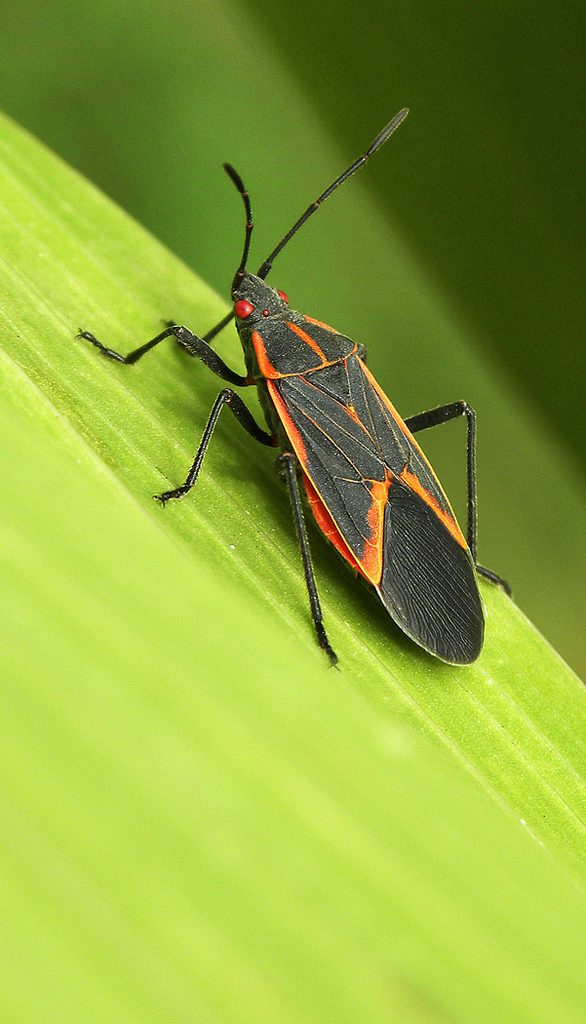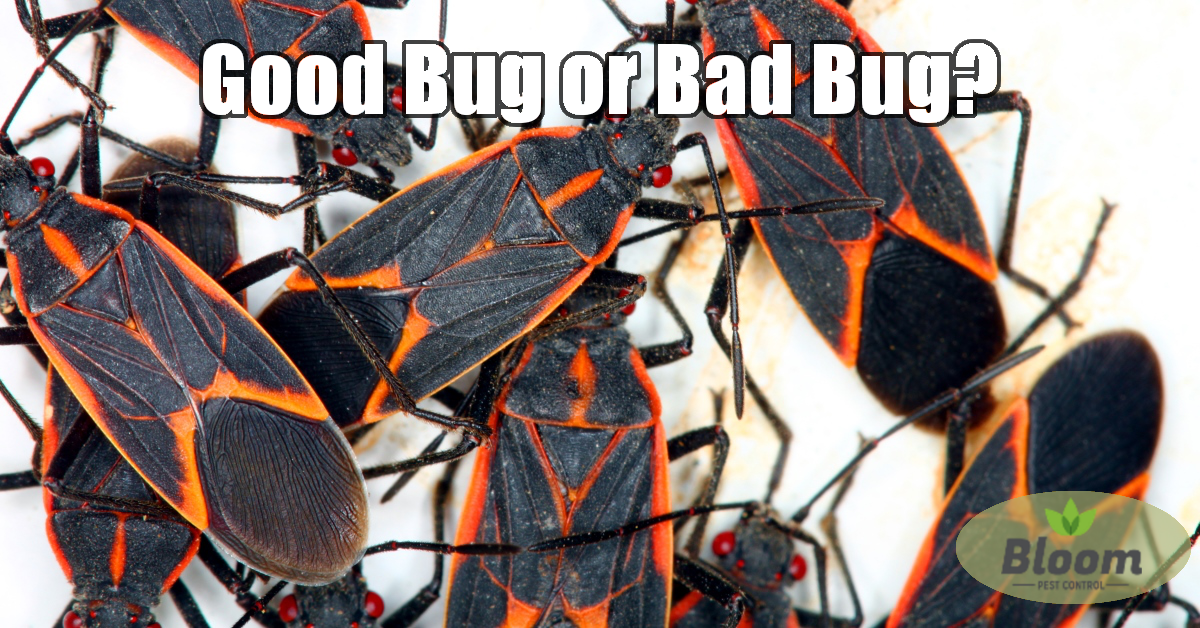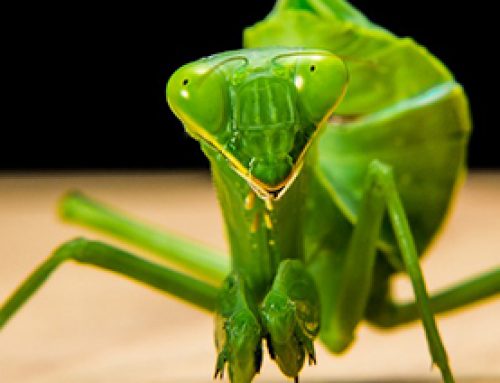
Ever see a tree with that looked like it had moving scales? It sounds like something out of a sci-fi movie, but this is what a boxelder bug looks like when they find a place to roost in! The boxelder bug is mainly black, with vibrant red or orange markings on their bodies. These bugs like to move in to your home when it starts getting cold out, they eat from your garden and like to swarm whatever side of your home has the sun on it.
How Can I Identify a Boxelder Bug?

Newly hatched Boxelder bugs are called nymphs, and start off at 1.5 mm long, wingless, with bright red abdomens and black legs and antennae. As they grow, they become about 0.5 inches long, with flattened backs, and unique orange tipped wings. Very distinct and funky looking.
Where Do Boxelder Bugs Live?
Boxelder Bugs love making their ways into crevices and cracks. They typically look for these spaces in trees, but become a nuisance when they go for the walls and sidings of houses.
Life Cycle of a Boxelder Bug?
In the fall, once they find a suitable place, they will secure the area by over populating the site and hibernating. This is when their presence becomes apparent to people; densely populated groups “sun” themselves while they rest on trees. Come late April to early May, they will emerge and take flight, but will return to their host tree to lay eggs in the crevices they claimed. Boxelder bug eggs typically hatch within 10 to 14 days after being laid.
What do Boxelder Bugs Eat?
Boxelder bugs survive on fruits and plants, such as strawberries, apples, stone fruits, maple, and grass. While they’re not known to destroy ornamental plants, they have been known to damage fruit trees during the end of the summer.
Why Is Removal Necessary?
The biggest nuisance these bugs pose to is their presence in a home. An infested area can host thousands of Boxelder bugs at a single time. They can make their ways on your walls, which can be startling. Another is the potential damage to ornamental trees, which is their food source.
Bloom Editor Danielle Schneider

Bloom Writer Leah Iannacone




Leave A Comment